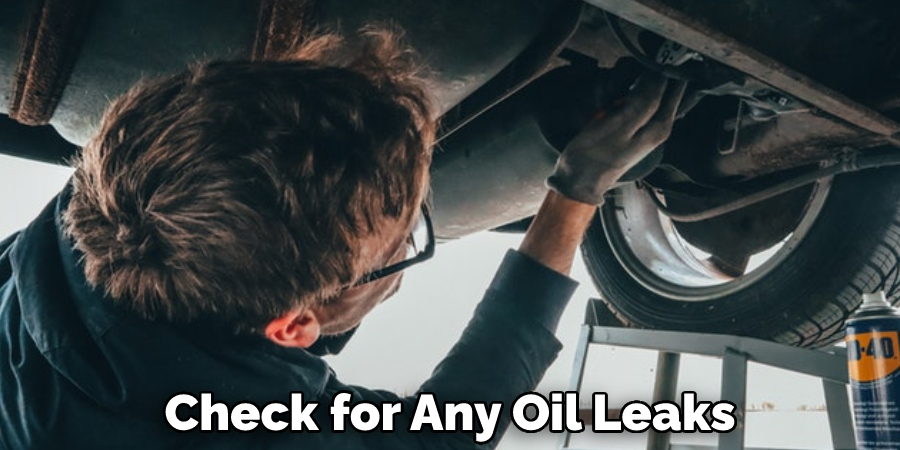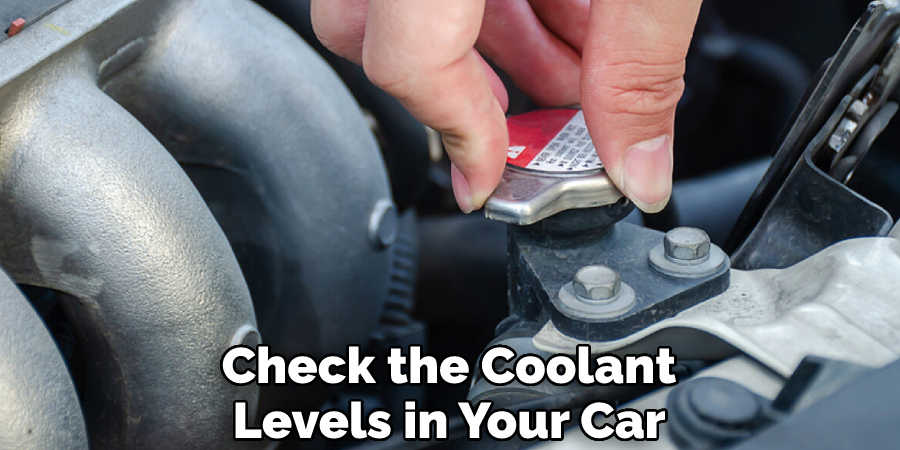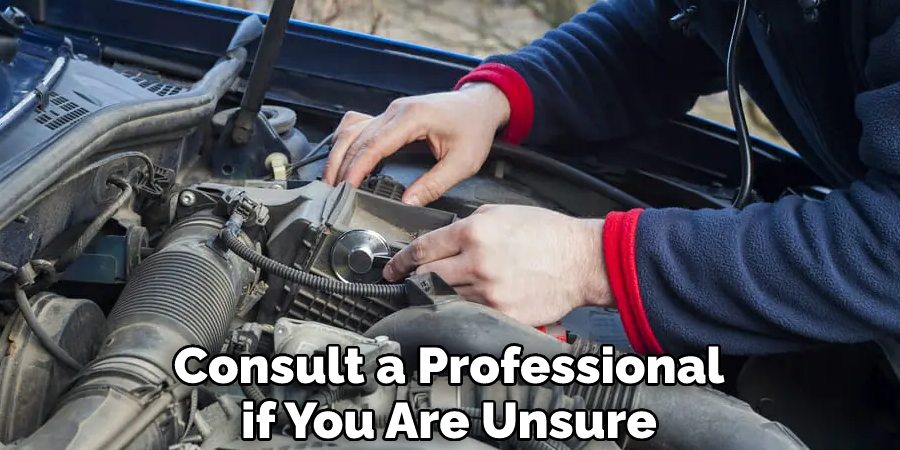The sloshing sound in your car can be quite irritating and distracting when driving, but it can also indicate an underlying problem. Engine brakes could cause the sound of liquid moving or splashing inside the vehicle or transmission components leaking. When left unaddressed, this leaking fluid can cause damage to parts and make the vehicle unsafe. Therefore, it is important to identify and fix any sloshing sounds you hear coming from your car.

The advantage of learning to fix sloshing sound in a car is that it can save you time and money from taking your vehicle to the mechanic. Additionally, by understanding the possible causes and solutions for this problem, you can easily diagnose and troubleshoot the issue on your own.
This will enable you to quickly identify what part or system you need to inspect and repair to eliminate the sloshing sound. Furthermore, understanding the process can also help avoid any further damage which can be caused by attempting a fix without having proper knowledge of the topic. In this blog post, You will learn in detail how to fix sloshing sound in car.
How Do You Identify the Source of the Sloshing Sound in Your Car?
- Start by identifying if the sound is coming from inside or outside of the car. You likely have a problem with your tires, suspension, or shocks if it’s an exterior noise. You’ll need to investigate further if it’s a noise coming from within the car’s cabin.
- Raise up your car and take a look underneath. Pay close attention to the suspension and shock absorbers, as these are often sources of sloshing sounds. Check for any signs of damage, such as broken springs, leaking oil, or worn-out shocks.
- Inspect your tires as well. Uneven tread can cause some noise when driving over bumpy terrain. Worn-out tires can also be a source of sloshing sounds.
- Open up your car hood and look around the engine compartment. A sloshing sound can often come from something as simple as low fluid levels or worn-out belts.
- Listen carefully to where the sound is coming from. If you’re still unable to identify the source, it might help to have a mechanic take a look at your car.
Once you’ve identified the source of the sloshing sound in your car, you can start taking steps to fix it. Depending on the issue, you might need to replace components, get a tune-up, or take other steps for repair. By following these steps, you can identify the source of the sloshing sound in your car and start making repairs as needed.
Step-by-Step Processes for How to Fix Sloshing Sound in Car
Step 1: Inspect Your Car
Take a look around your car and identify if you can see any signs of damage that might be causing the sloshing sound. Check for any oil leaks, loose or broken parts, or any other issues. To confirm what is causing the sloshing noise, get into your car and start it up. Listen to the sound and identify where it is coming from.

Step 2: Check the Fluids
Inspect all of your car’s fluids, from brake fluid to oil, and make sure that they are at their proper levels. If any of them are low, fill it up and see if that eliminates the sloshing sound. Low levels in any of these fluids can cause various problems, so it is important to ensure they are topped up.
Step 3: Clean the Radiator and Other Components
If your car has been sitting for a while, there may be some dirt and debris around your vehicle’s radiator or other components. This can cause an odd noise when your engine starts up and should be cleaned up to prevent any further damage.
Step 4: Check the Belts
Check that all of your belts are in proper working order and replace any that may be damaged or worn out. Slippage of the belts can cause a sloshing sound, so it is important to ensure they are properly tightened.
Step 5: Change Your Oil
If your car is overdue for an oil change, this could also be causing the sloshing sound. Make sure to follow your manufacturer’s instructions for changing the oil and use the correct type of oil for your vehicle.
By following these steps, you should be able to fix any sloshing sound that is coming from your car. If the noise persists or you are uncertain about how to proceed, it may be best to consult a professional mechanic for further help.
Tips for How to Fix Sloshing Sound in Car
- Be sure that you have the right tools and materials on hand to complete the repair process. Make sure to double-check your toolkit to ensure it contains all of the necessary equipment, including a socket set, screwdriver, and WD-40 lubricant.
- Wear safety glasses when performing this type of work as there is potential for metal pieces and other debris to fly around.
- Make sure the car is parked on a level, flat surface before beginning work. This will help reduce any further sloshing of fluids while you’re working.
- Take precautions to protect yourself from hazardous materials such as coolant or gasoline. Use ventilation, protective clothing, and gloves to protect your skin from any contact with fluids while working in the car.
- Before beginning work, make sure that the vehicle is off and cool. Do not attempt to start it while attempting repairs, as this could cause more sloshing of liquids inside the engine compartment.
- After completing the repair, inspect the surrounding area to ensure that all parts and pieces are in place and correctly connected. Also, check for any leaks or damage to hoses or other components before turning on the engine. This will help avoid further sloshing noises down the line.
Following these tips can help you successfully repair the sloshing sound in your car and get you back on the road.
What Other Preventive Measures Can You Take to Prevent Your Car From Making a Sloshing Sound in the Future?
- Preventive measures are the best way to avoid a sloshing sound from occurring in your car. Here are some of the most important things you can do to prevent a sloshing sound from happening in the future:
- Keep your car well-maintained and regularly serviced by qualified mechanics, especially for any issues related to your car’s cooling system.
- Check the coolant levels in your car regularly and top up as necessary.
- Make sure there are no leaks or cracks in any of the hoses, pipes, and other parts related to the cooling system.
- Have your car inspected by a qualified mechanic on a regular basis to ensure there are no other issues or problems.

By taking the necessary steps above, you can be sure that your car won’t make sloshing noises in the future. If you follow these preventive measures, then you should have a smooth and quiet ride every time.
Is It Necessary to Call Any Professional Mechanics to Fix Sloshing Sound in Car?
Yes. It is important to call a professional, as the sloshing sound could indicate many other issues. A qualified mechanic can diagnose and fix the issue quickly and effectively, saving you time and money in the long run.
The first step in fixing a sloshing sound in your car is identifying the noise source. A professional mechanic can examine the entire system and find the exact source of the problem. Once the source is identified, they can then determine what repairs are necessary and provide you with an estimate of the cost.
Some common causes of sloshing sound in cars include a loose exhaust system, worn out or damaged engine mounts, or an air leak in the fuel system. If the sloshing sound comes from the engine, it could be due to a malfunctioning oil filter or a loose timing belt. The mechanic can determine if any of these are causing the noise and perform the necessary repairs.
How Much Will It Cost if You Hire a Professional?
If you don’t feel comfortable tackling the problem, you may have to hire a professional mechanic to take care of it. How much this will cost depends on the car type and the repair’s difficulty. Generally, expect to pay anywhere from $50-$300 for labor costs alone. If parts need to be replaced as well, this could add hundreds of dollars to the total bill. If you’re unsure what the repair will cost, get a full quote from your mechanic before authorizing any work.
It’s also important to note that if you’re in an older car or one with high mileage, there may be underlying issues causing the sloshing sound. In this case, the mechanic may find other problems during the repair process that need to be addressed as well. Be prepared for additional costs if these issues are discovered.
Conclusion
Sometimes, fixing a sloshing sound in a car can be difficult and time-consuming. It may require extensive labor or additional parts that could be expensive. Furthermore, the cause of the sound could be hard to pinpoint, making it hard to know what needs to be done to fix it. It is best to consult a professional if you are unsure how to fix a sloshing sound in your car.

In conclusion, sloshing sound in your car is an issue that can be easily fixed by locating the source of the sound and addressing it. You should start by checking for any obvious sources, such as a loose or damaged belt, worn-out suspension components, or a clogged muffler. If these solutions don’t resolve the issue, then you should take it to a mechanic who can diagnose and solve the problem. Remember that extreme temperatures can also play a role in sloshing sounds, so make sure to check your car’s temperature and adjust as needed regularly. I hope this article has been beneficial for learning how to fix sloshing sound in car. Make Sure the precautionary measures are followed chronologically.

